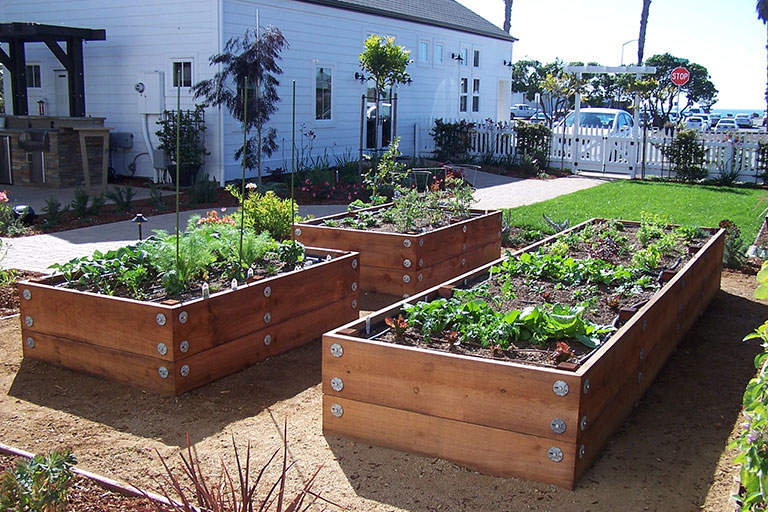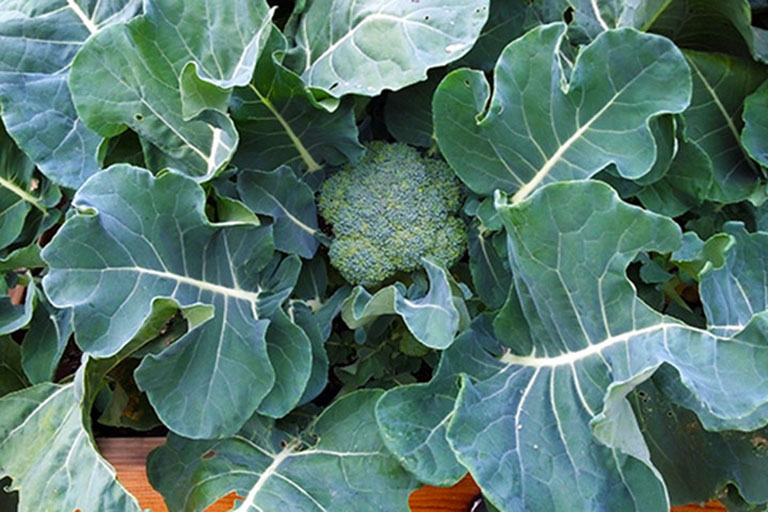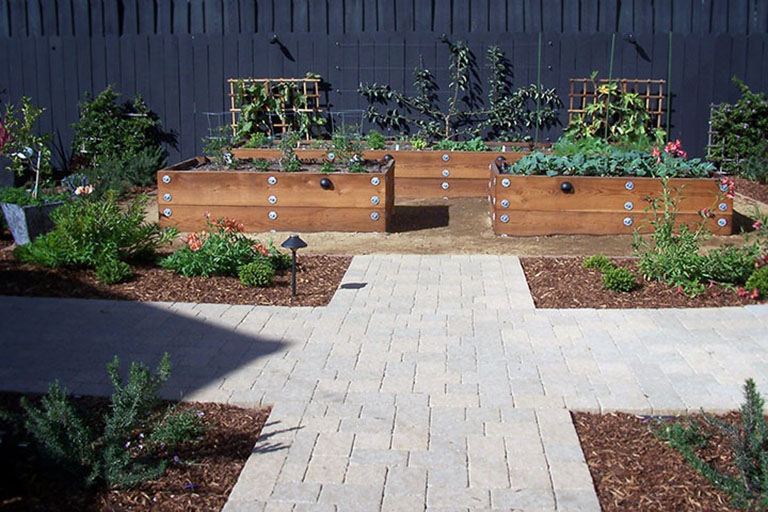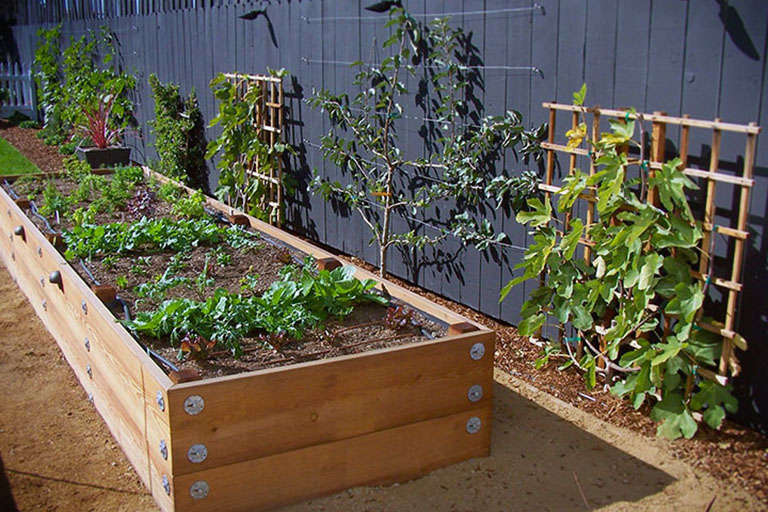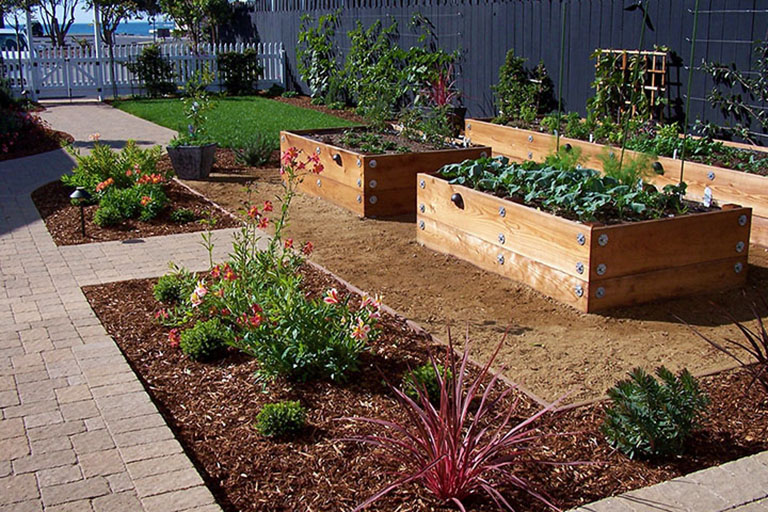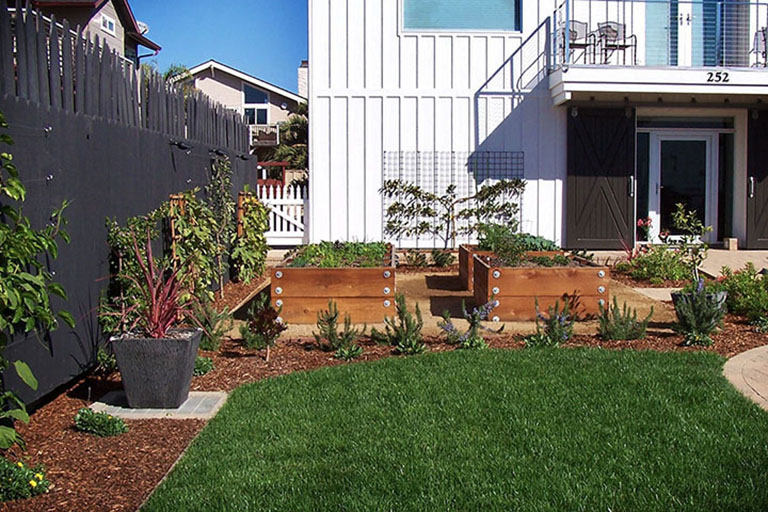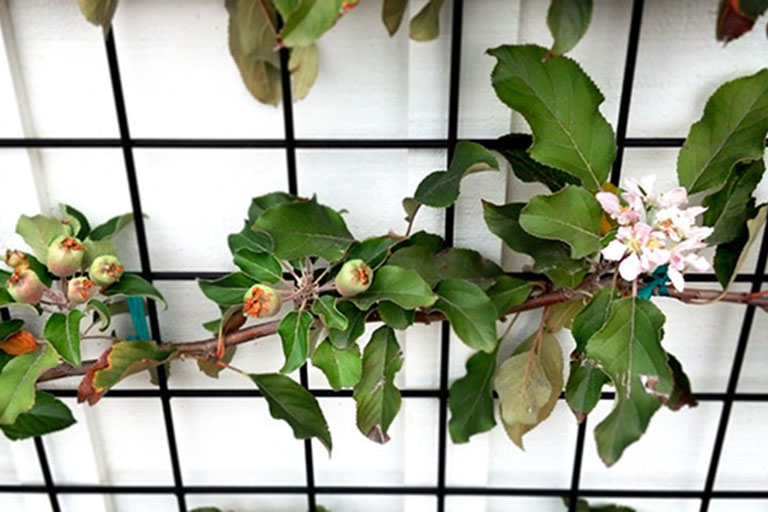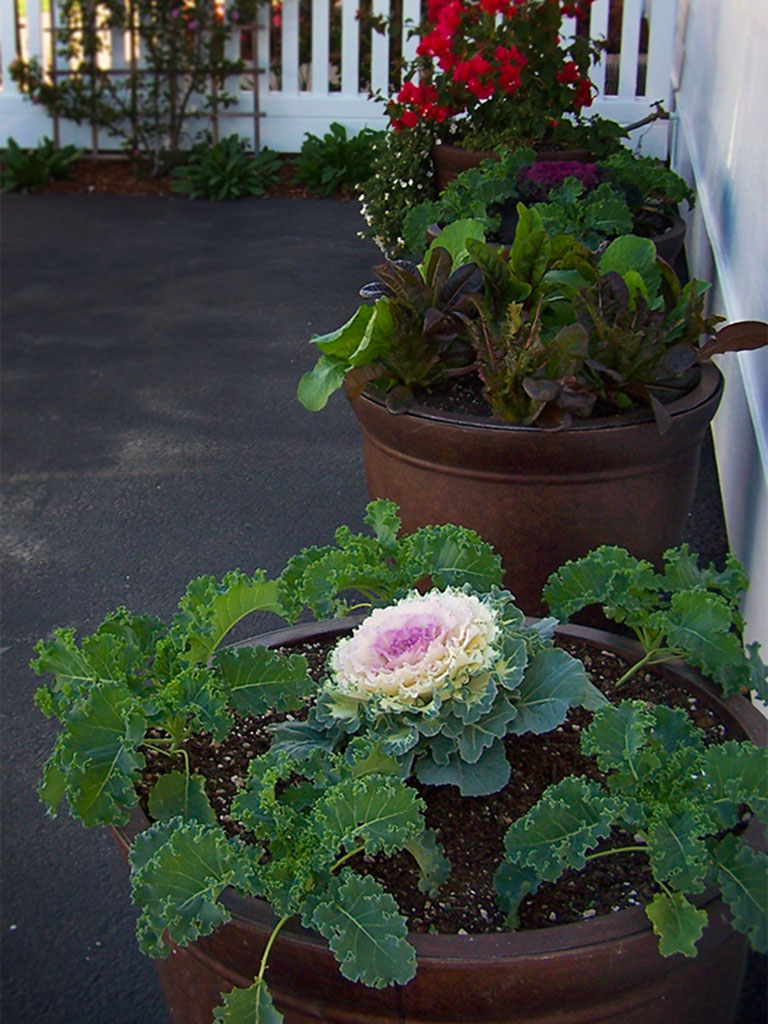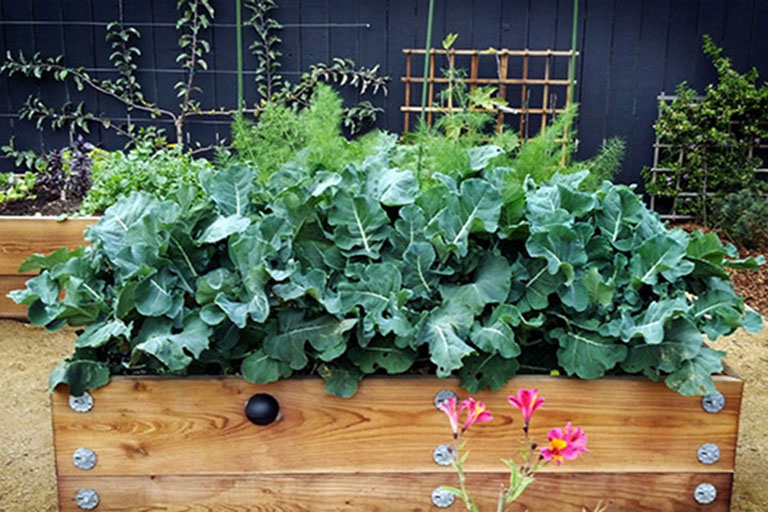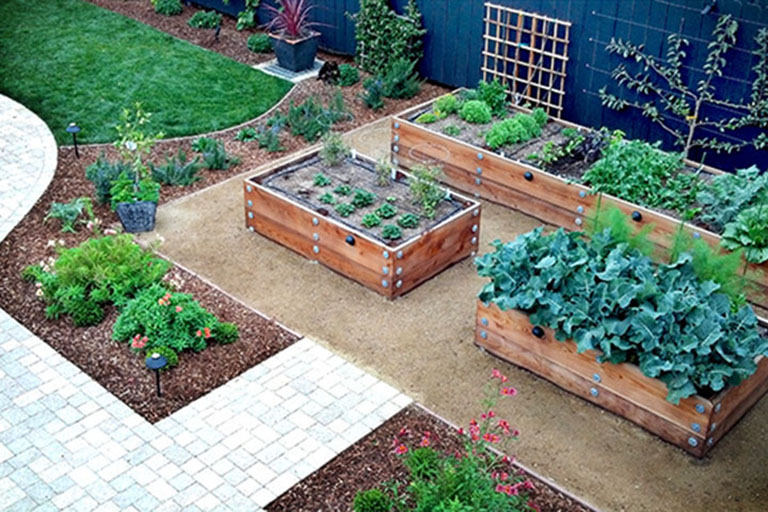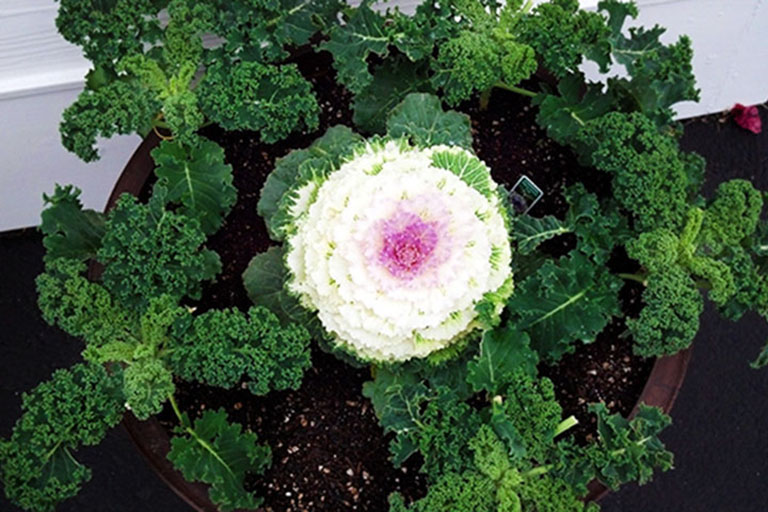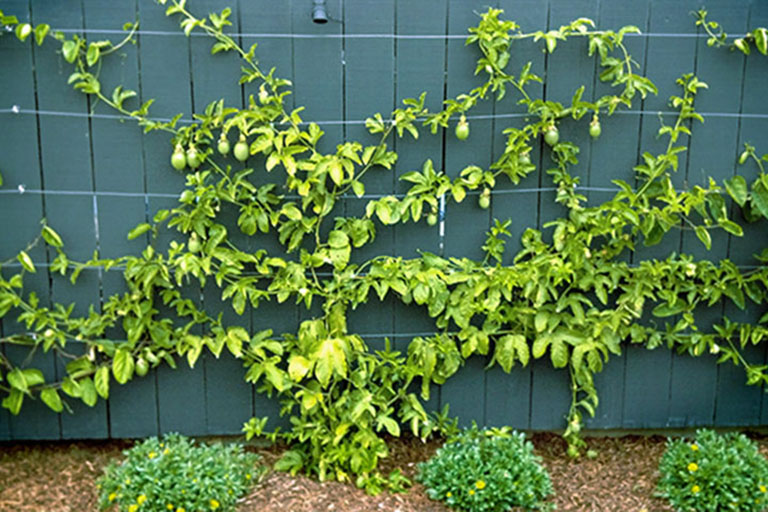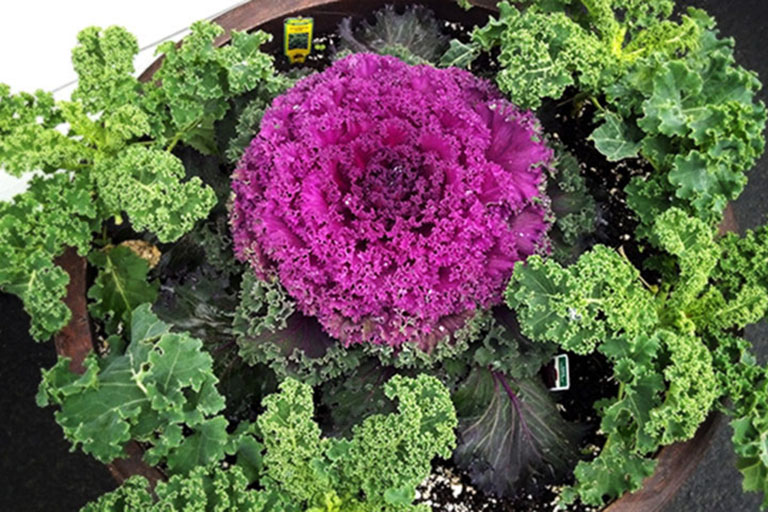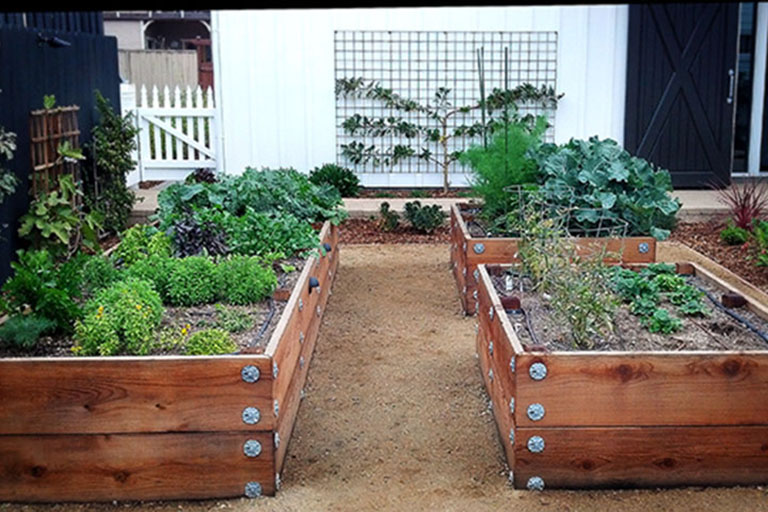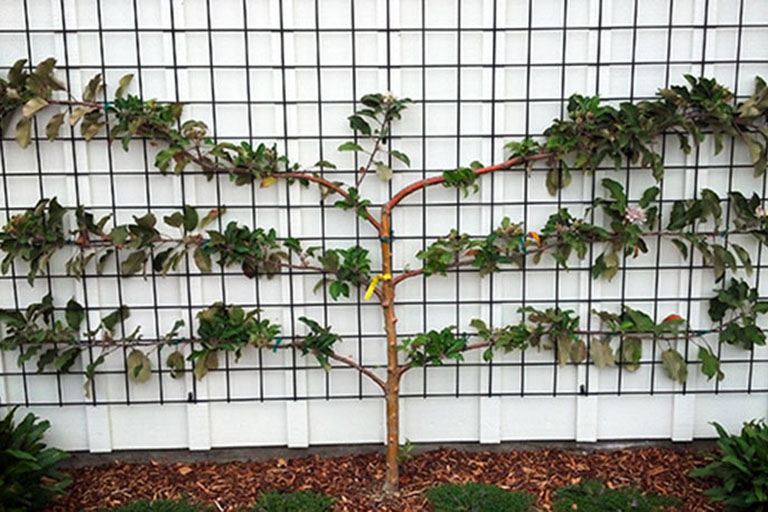Landscaping Portfolio – Edible Gardens
Edible landscaping is the practical integration of food plants within an ornamental or decorative setting. Edible landscaping uses the same design principles as ornamental landscaping, while substituting edible plants such as lettuces, berries, vegetables and fruit trees for some of the otherwise unproductive plant material. Using edibles in landscape design can enhance a garden by providing a unique ornamental component with additional health, aesthetic, and economic benefits.
Types of Edible Gardens
Raised Beds
Raised beds are easily filled with compost-rich soils for healthier plants, are easier on the back to maintain, and can discourage gophers and ground squirrels. The soil warms quicker in raised beds than in the ground, allowing for an earlier growing season.
Herb Gardens
Herb Gardens can be planted in the ground, in raised beds, or in pots. Woody herbs such as Rosemary, Sage, Lavender, Thyme, and Oregano incorporate well into existing landscapes. More delicate herbs such as Basil, Parsley, Cilantro, Chives, and Mint grow well in raised beds and containers.
Container Gardens
Tomatoes, beans, peas, radishes, lettuces and spinach are just a few of the vegetables that can be grown in containers if they have at least six hours of direct sunlight. Advantages to container gardening include warmer soil temperatures and the deterrent of burrowing animals or pests usually found in the ground. Groups of containers can add visual interest to patios, decks, and balconies.
Espalier and Trellises
Espaliered fruit trees such as apple, pear, peach, pomegranates, and grape and berry vines are a good way to add vertical interest to a wall or fence. There are many attractive patterns that can be used to espalier trees and vines. Squashes, cucumbers, tomatoes, beans, and peas are good candidates for trellising. Both espaliered and trellised plantings are good ways to save space in the landscape.
Orchards and Vineyards
If space allows a small home orchard can be a great source of fresh fruits, a few examples are apple, pear, peach, plum, avocado, and citrus trees. Some fruit trees come with several varieties grafted on to one trunk. Plant an olive orchard and make your own preserved olives or pressed olive oil. Grape and berry vines for eating or winemaking can be espaliered, trellised, or grown on arbors to provide shade during the summer months.
Client Testimonials
-
“My garden is wild with joy. Thanks for your marvelous work and creativity!”
-
“There was no proper drainage on the property and our house had flooded several times during the 20+ years we have lived here. Earthscapes designed and built an entirely new landscape and drainage system for our home. Everyone involved in this process was professional, creative, and fun to work with. They showed up exactly when they said they would. The subsequent drainage system and landscaping has given us an environment that has resulted in countless hours of joy.”
-
“Suzanne and Mike Morrison are the owners of Earthscapes, and are as professional as anyone in business we’ve met. From the early meetings with Suzanne about the types of plants we might like, to the very professional drawings she prepared, to the installation of a long garden wall and hardscape, to the installation of all of the plant materials, the Earthscapes team was fabulous. Suzanne and Mike have the type of employees that every business owner would love to have.”
-
“Thank you for the exceptional job you and your crew did in creating our backyard sanctuary. From our first meeting to the completion of the project, we felt that we were in a true collaboration with you to create a unique and spectacular space. Your creative and practical input guided us along the way while still allowing us the freedom to create very personal statements with our decisions.”
-
“From the first day, we knew the choice of Earthscapes was the best! The entire team was professional, communicated well with us, spent their time very wisely, and cleaned up along the way and at the end of each day. We are totally pleased with the quality of the materials and the workmanship that went into this project and are enjoying their efforts thoroughly. The work was completed in a timely manner and with top-quality results. Cannot recommend Earthscapes and their team highly enough.”
-
“Suzanne was easy to work with, solicited and responded to our input. She is very knowledgeable about plants that do well in San Luis Obispo and has good relationships with local wholesale nurseries. She allowed us to accompany her to pick out the plants to be used. Earthscapes was a pleasure to work with from top to bottom.”
-
“It was very easy working with Earthscapes. From initial design interview to the installation of the final plant, they provided friendly, professional and personal service. Their crews worked quietly, so the project did not disturb the neighborhood… Most important, Mike and Suzanne listened closely to our vision. The result was a unique landscape designed specifically for our site. They were available throughout the project on phone and e-mail and stopped by frequently to make sure the job was going well. I recommend Earthscapes highly.”
-
“Mike and Suzanne are awesome to work with. Their work has held up very well. They do a great job and stand behind their work. They were very patient with us and worked hard to make sure we ended up with exactly what we wanted. We highly recommend them for hardscape and landscape.”
-
“Suzanne and Mike were very accommodating and patient… I am impressed by the fact that they didn’t take shortcuts and the work done was very professional. I will also be using them for maintenance on my yard. I have had a lot of positive feedback on my yard from neighbors and passersby. I love my new yard, and considering the amount of time, attention to details, quality of materials and professionalism, the price I paid was very fair. I highly recommend Earthscapes.”
-
“I want to thank you for responding so quickly to my request for help for my broken water main. I’m sure you are all quite busy with many planned projects, but you helped me out when I was in a bind and I want you to know that I appreciate it. I am very pleased with the professional and congenial relationship you develop with your clients. I am also very happy with the projects you have completed for us and I hope to continue working with you on future endeavors.”

